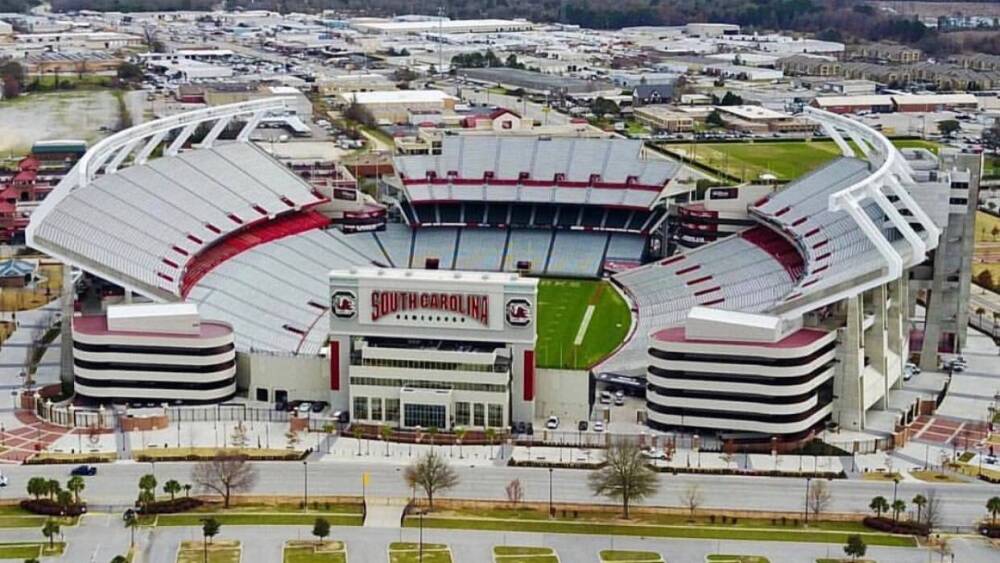The Gamecocks, led by coach Shane Beamer, will kick off their 2023 season on September 2 (less than 50 days, if you’re counting). They had an 8-5 season last year, with notable victories over top-15 teams like Kentucky, Tennessee, and Clemson. They also defeated Texas A&M for the first time + ended the season ranked 23rd nationally.
Seven of the team’s 12 games will be played at Williams-Brice Stadium, which is set for its 89th year of Gamecock football.
“A structure forged from concrete and time” — Williams-Brice Stadium, originally known as Carolina Municipal Stadium, was constructed in 1934 and was completed during the Great Depression, thanks to federal Works Progress Administration (WPA) funds. It started with a seating capacity of 17,600 but, over the years, various renovations transformed it into its current form.
Timeline
- During the 1940s + 1950s, endzone seating was added, giving the stadium its bowl shape and increased seating to 40,000+.
- Renovations in the early 1970s, funded by an inheritance from Martha Williams-Brice, added over 14,000 seats, an Astroturf playing surface, and a west upper deck.
- The stadium’s name was officially changed to Williams-Brice Stadium on September 9, 1972, to honor Martha Williams-Brice, whose family operated the Williams Furniture Company in Sumter.
- The addition of an east upper deck in 1982 raised the capacity to 72,400, and the construction of the Kay and Eddie Floyd Building, suites, clubs, and a new press box in the 1990s.
- A state-of-the-art, $6.5 million videoboard was installed in 2012.

The Stadium Project aims to develop 800 acres near Williams-Brice Stadium and update the home of the Gamecocks football team. | Graphic via Gamecocks Online
The renovations don’t stop there — last season, the Gamecocks debuted their new LED lights during “Sandstorm” + announced last February the Stadium Project to modernize Williams-Brice. The goal is to develop 800 acres near the Congaree River and 17 acres around Colonial Life Arena.











